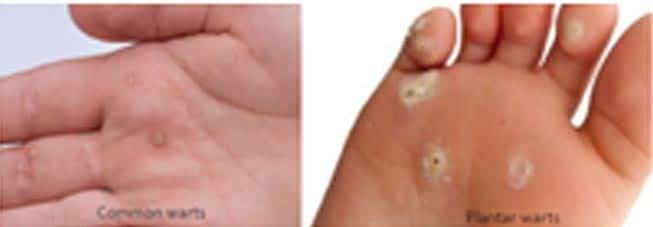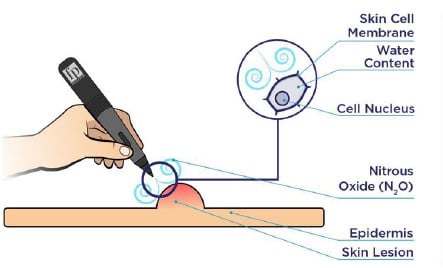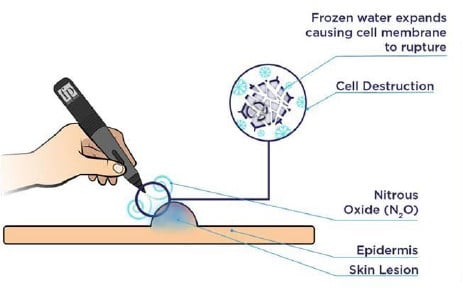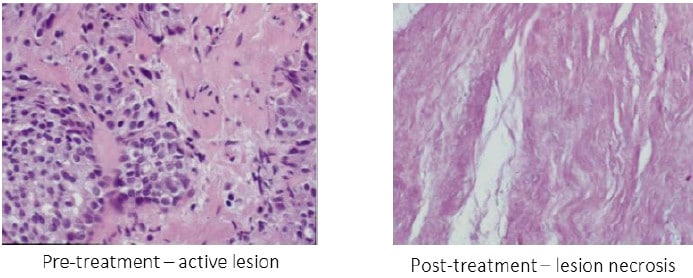" When A Flower Doesn't Bloom You Fix The Environment In Which It Blooms, Not The Flower"
Alexander Den Heijer
Cryotherapy – Benign Skin Lesion Removal in Ottawa
Extreme cold is applied rapidly, precisely and pain free to the unwanted benign skin growth such as skin tags, moles and warts. This causes the unwanted skin cells to die, and the lesion disappears after healing. This treatment is very effective in treating multiple unwanted skin conditions such as A wide variety of superficial benign (non-cancerous) lesions can be treated with cryotherapy, and it is most commonly used to remove skin tags, warts- common and plantar, actinic keratoses (an area of sun-damaged skin found predominantly on sun-exposed parts of the body), seborrhoeic keratoses and other benign lesions.
Cryotherapy is the controlled destruction of unwanted tissue by the precise application of extreme cold (cryonecrosis). Today, cryotherapy is the gold standard for removal of skin lesions in dermatology and aesthetic practices. It is found to be effective in treating benign skin lesions and is relatively painless, with no downtime and scaring after healing.
Although there is slight local pain felt, cryotherapy does not normally require a local anaesthetic, and the procedure itself lasts a matter of seconds; the precise time depends on the thickness and size of the lesion. The frozen skin becomes white and takes one to two minutes to thaw back to normal skin temperature. The process will be repeated once the skin has thawed. After a few days, a scab will form, and this will take one to two weeks to fall off (occasionally a little longer, especially on the legs). Usually, the treated area will eventually look normal, although scarring and discolouration is possible, and rarely ulceration, particularly on the lower legs. Depending on the nature of the lesion, more than one treatment may be necessary, and this is usually repeated at regular intervals. Schedule your skin tags and warts removal appointment today with Nakota MediSpa in Barrhaven, Ottawa.
Treatment is provided for the following unwanted benign skin lesions:
- Skin tags – Soft Fibroma
- Moles
- Cherry Hemangioma
- Milia
- Actinic Keratosis
- Warts – common or plantar
- Dark spots/liver spots – Solar lentigo
- Fibroma
- Seborrheic Keratosis
- Molluscum
NOTE: Ottawa Cryotherapy treatment is ONLY available for non-malignant (non-cancerous) lesions.
Soft Fibroma
A skin tag is a type of soft fibroma which is usually found in areas where the skin forms creases (e.g. neck, eyelids, armpits, groin and under breasts). Skin tags can be observed in about 46% of adults and are claimed to arise from excessive skin friction, although genetics may also be associated with skin tags development.


Warts
A skin tag is a type of soft fibroma which is usually found in areas where the skin forms creases (e.g. neck, eyelids, armpits, groin and under breasts). Skin tags can be observed in about 46% of adults and are claimed to arise from excessive skin friction, although genetics may also be associated with skin tags development.
Common Mole
A common mole (also known as ‘nevus’) is a growth on the skin that develops when pigment cells (melanocytes) grow in clusters. Most adults have between 10 and 40 common moles. Most people continue to develop new moles until about age 40. Sun exposure, genetics and hormonal changes are believed to trigger moles growth.


Solar Lentigo
Solar Lentigo (AKA “dark spot”, “age spot”, “liver spot” etc.) is a harmless patch of darkened skin caused by localized proliferation of melanocytes and accumulation of melanin within the skin cells. Solar lentigo is mostly attributed to excessive exposure to UV radiation.
Cherry Hemangioma
Cherry Angioma (AKA “red moles”, “senile angioma” and “Campbell de Morgan spot”) is a benign growth that consists of a cluster of small blood vessels. Cherry Angiomas are the most common kind of angioma, and occur in nearly all adults over 30 years.


Fibroma
Fibroma is a benign tumor-like growth made mostly of fibrous or connective tissue. Fibroma is uncontrolled cell growth occurs for an unknown reason, or as a result of injury or local irritation.
Milia
Milia is a cyst that forms when keratin becomes trapped beneath the surface of the skin. Milia occurs in people of all ethnicities or ages.


Seborrheic Keratosis
Seborrheic keratosis (SK) is harmless common dark skin growth, which is more prevalent at middle aged or older people. The cause of SK is still unknown, although genetics seems to play a role in its formation.
Actinic Keratosis
Actinic keratosis (AK) is a patch of thick, scaly, or crusty skin. AK lesions are considered precancerous. The main cause of AK is excessive exposure to UV radiation. Today, 60% of all Canadians over age of 40 have at least one AK lesion.


Molluscum
Molluscum is a contagious skin infection caused by the Molluscum contagiosum virus.Molluscum contagiosum is spread by direct contact with someone who has it or by touching an object contaminated with the virus, such as a towel or a piece of clothing
What To Expect During The Treatment And The Healing Process
Step 1
- High pressure cryogenic gas (N2O) is released from the FreezPen.
- The applicator’s tip creates a focused gas jet that can be easily targeted only at the lesion itself for maximal precision.
- Minimal pain may be felt due to the pressure from the FreezePen.
- In-tissue temperatures immediately drop to -27oC and lower (the minimum threshold for cryonecrosis is -25oC).

Step 2
- Ice immediately form and spread inside the lesion.
- Ice crystals are formed and expand inside the cells.
- High pressure within the cells rupture their membranes and the cells are destroyed.

Step 3
- During healing, dead cells are eliminated and the lesion shrinks over time.
- Damaged tissue is removed and allows new healthy tissue to grow in the same area.
- The tissue usually recovers after 4-5 weeks.
- Vaseline promotes tissue recovery and reduces risk of pigmentation.

Care After The Treatment
Generally, there is no special post-treatment care regime and the patient may resume full activity immediately after.
- The lesion is expected to become reddish, swollen, and sensitive to touch. A temporary blister islikely to appear. The patient may also feel residual pain that will fade after few hours
- After 3-4 weeks the scab is expected to fall off.
- A follow-up visit is recommended after 4 weeks to confirm that all the pathological tissue has
disappeared or to determine if a second treatment is necessary. - It is recommended to use medical grade Vaseline or Polystyrene during the healing period. Product needs to be applied according to the instructions of use until complete healing. Vaseline and Polystyrene promote effective wound-healing and reduces the risk of adverse reactions.
Pricing

OPTION 1
- Appointment – $75
- Skin tags* – $20/each
- Warts* – $35/each
- Cherry Angioma, Fibroma, Milia, etc. – $25/each
- Price for each skin lesion treated during the same appointment.

OPTION 2
- Appointment + up to 200 seconds of FreezPen treatment* – $165
- Treatment can include any combination of skin lesions
- Generally about 10 – 12 skin tags can be treated in 200 seconds depending on size
- When there is a combination of various lesions I.e. warts, moles, skin tags, etc. the pricing will be discussed during the consultation and before the start of the treatment.
- Consultations are Free!
